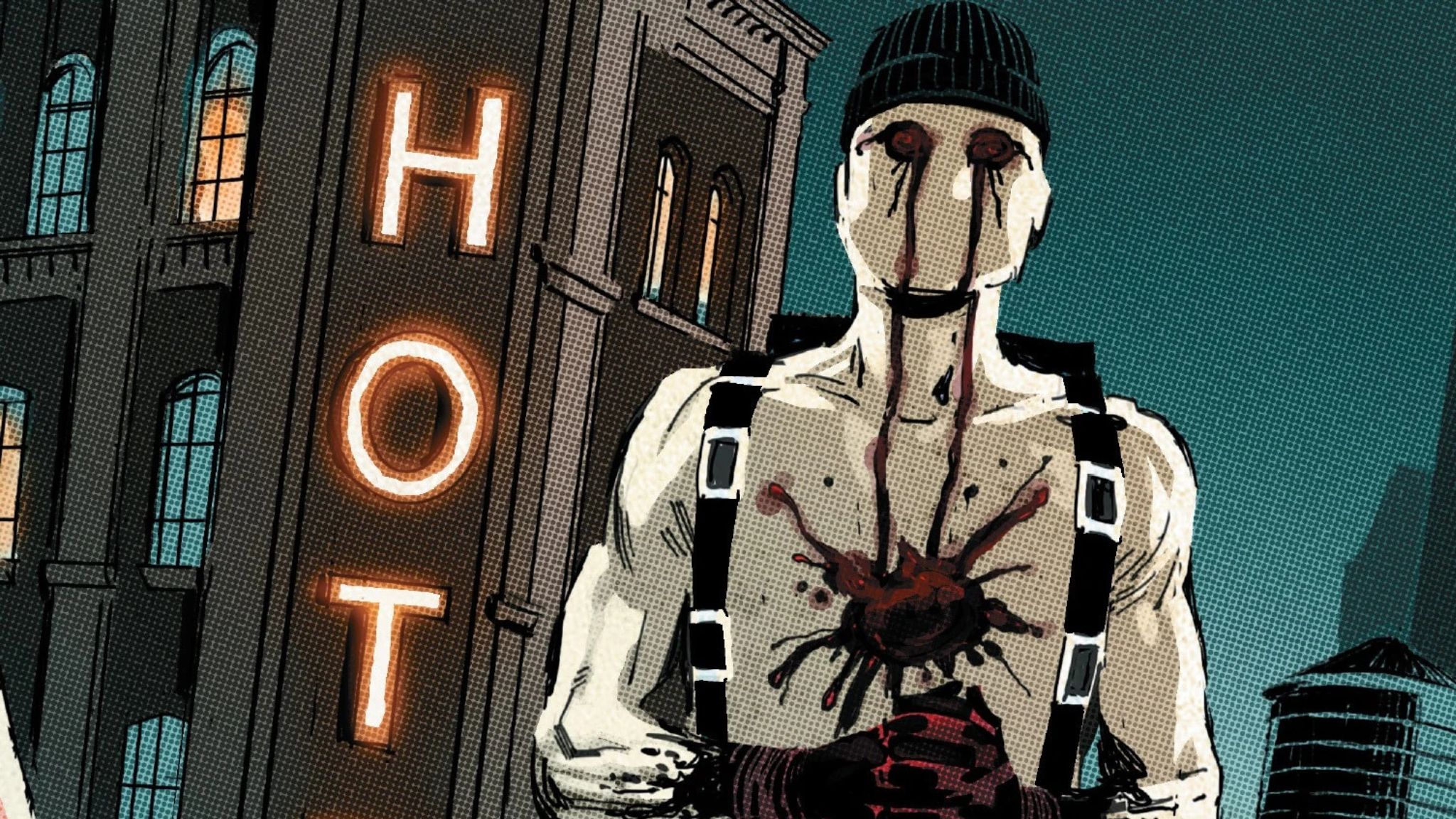
From its initial debut, the series “Daredevil: Born Again” has gradually escalated suspense surrounding the enigmatic adversary, Muse. Initially hinted at through intricate murals he painted across New York City, his graffiti was later discovered to be created using the blood of his victims, making these works of art gruesome crime scenes that confound law enforcement and frighten residents. Seizing this growing public apprehension, Mayor Wilson Fisk (Vincent D’Onofrio) has tactically exploited the situation to further his anti-vigilante cause, launching a contentious Task Force with the aim of dismantling masked criminals. The gradual unveiling of Muse reached its climax in Episode 6, where he finally confronted Matt Murdock (Charlie Cox).
In episode six, Matt put on his Daredevil suit for the first time since Foggy Nelson’s passing, to save Angela Del Toro (Camila Rodriguez) from Muse’s clutches. This encounter showcased Muse’s unanticipated fighting skills, enabling him to temporarily match wits with Hell’s Kitchen’s Devil before slipping away. However, episode seven delves deeper into the villain’s lore, offering a rich backstory. Regrettably, this narrative shift somewhat lessens the chilling impact that made Muse so unsettling in Marvel Comics.
WARNING: Spoilers below for Daredevil: Born Again Season 1, Episode 7
In the seventh installment of Daredevil: Born Again, we unveil the hidden identity of Muse as Bastion Cooper (played by Hunter Doohan), a wealthy young man raised under the pressure-cooker expectations of his demanding parents. Over several insightful chats with Dr. Heather Glenn (Margarita Levieva), we learn that Bastion was compelled to study taekwondo from an early age, and eventually competed professionally against his own will. This forced athletic training, driven by parental expectations, clashed sharply with his true passion for art, fostering a longstanding bitterness within him. Ironically, this enforced martial arts training turns out to be the reason behind Bastion’s impressive physical abilities, providing a convincing challenge for Daredevil.

It’s revealed in “Daredevil: Born Again” that Bastion has been institutionalized for mental health issues several times, but the specifics of his psychological problems remain unclear. What’s particularly chilling is that Bastion acknowledges Heather’s professional work, including her books and therapy methods, as instrumental in enabling him to reveal his true identity and adopt the Muse persona. This presents a grim irony since Heather’s goal is to aid people in dealing with their traumas, yet her expertise unwittingly contributed to Bastion’s transformation into a serial killer who sees murder as the pinnacle of artistic expression.
In the storyline, the detailed backstory helps tie Muse and Heather together, fulfilling the series’ plot requirements. However, this revelation also diminishes the mysterious allure that once made Muse an intriguing antagonist within the Marvel Comics universe.
Muse’s Unknown Origin Is What Makes Him Scary in Marvel Comics

The enigmatic comic book depiction of Muse, crafted by writer Charles Soule and artist Ron Garney during their critically acclaimed tenure on Daredevil in 2016, retains an unbreakable aura of mystery surrounding the character. Making his debut in Daredevil #11, the comic incarnation of Muse remains nameless, without a backstory, or a definite motive beyond his warped artistic perspective. Readers are left in the dark about his origins, how he obtained his abilities, and the psychological forces fueling his lethal artistic endeavors. This strategic withholding of information was not a narrative lapse but a carefully considered creative choice that amplified the character’s unsettling influence.
In the comic book version, Muse’s artwork seems even more unsettling due to its lack of clear background or psychological context. Unlike traditional characters who may have been shaped by specific traumas or pressures, Muse appears as an unadulterated source of eerie, incomprehensible terror. This leaves readers grappling with the disquieting notion that some forms of malevolence might elude our attempts to label them or comprehend their origins.
Through its portrayal of Muse as a troubled rich kid grappling with parental issues and mental health problems, the series Daredevil: Born Again shifts him from an enigmatic force of nature to a villain type we’ve encountered numerous times before. The grotesque art installations and the cold-blooded killing of many victims lose their unsettling allure when viewed through this new lens. By presenting Muse as a typical antagonist, explaining his motives during captivity, and reducing him to a predictable pattern, the series strips away much of his intrigue. By the episode’s climax, where Heather shoots Muse dead, the character has been thoroughly demystified, and what was once terrifying in earlier episodes of Daredevil: Born Again now appears surprisingly conventional.
New episodes of Daredevil: Born Again premiere on Disney+ every Tuesday.
In your opinion, did Muse’s Marvel Cinematic Universe (MCU) origin story add depth or take away from their character? Feel free to share your thoughts below!
Read More
2025-04-02 05:42